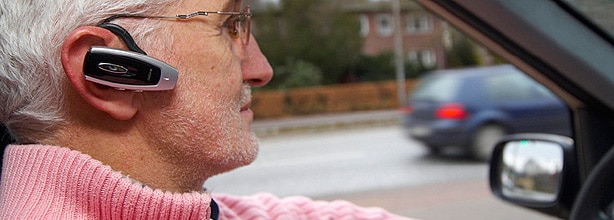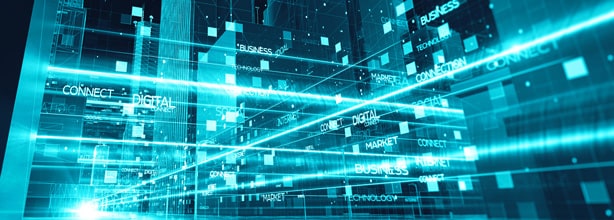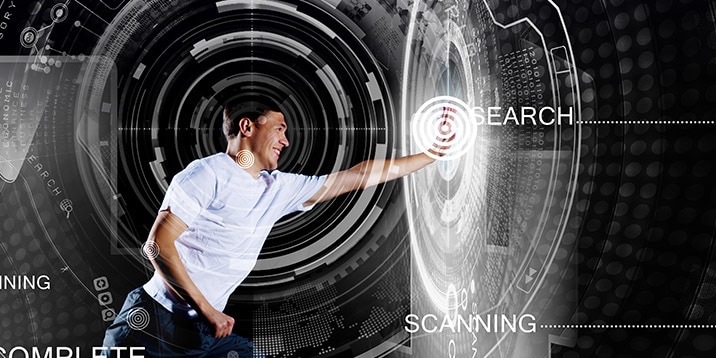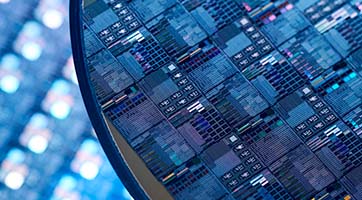
- Semiconductor Technology Now
Report Series
Little computers find their way into various places
Today, Apple’s iPad offers higher performance and lower power consumption at a much lower price than the Cray 2, the supercomputer that was introduced in the late 1980’s. It can be also made in a much smaller footprint. Devices that have the same configuration as a computer system but are not computers are called embedded systems. When these devices take on communications features, they are called IoT terminals or sensor terminals and represent a promising field for the future. Miniaturization has also facilitated the creation of these products.
Everyday items that are embedded with a computer system—in addition to the larger systems used by companies—such as the door knob on your front door, or an air conditioner that use a CPU to perform calculations and control via memory are called IoT (Fig. 2). A product embedded with IoT can provide history data that indicates when and under what conditions the product was activated. This allows users to check various information remotely, such as whether they locked the door before leaving home, or the operating status of an air conditioner. And it provides manufacturers with characteristics of individual users, which can be used in marketing to increase business efficiency.
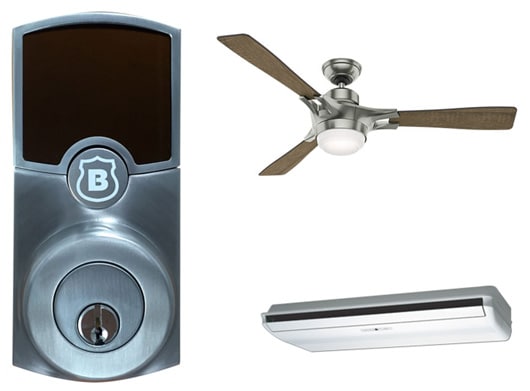 |
In summary, incorporating electronics and semiconductors into items that are unrelated to electronics, such as lighting, door knobs, air conditioners, and refrigerators, revolutionizes how we work and makes our lives more convenient. This is where the word digitalization can describe a new image.
OT: another term related to IT
Services that use the Internet and computers are referred to as IT (which is an abbreviation for information technology even though the service itself is not a form of technology), but now that this term is in widespread use, the term OT (operational technology) has come into use to describe labor environments that do not make use of IT.
It is now possible to visually represent the conditions on the work floor (OT) using a PC or other everyday product thanks to tools such as 3D CAD or CAE, which can be literally called IT. For example, we can run a simulation tool on a PC to view a graphical representation of actual work being performed by workers, or a line or workbench in the factory. By displaying the distance from one workbench to another in the next process, we can simulate ways to optimize the process (such as changing the distance between the workbenches), thus shortening work times and increasing efficiency. By adding graphical representations of a worker’s hand placement and height, for example, we can even determine if the workbench is positioned within optimum reach. These simulations are extremely helpful when actually designing a line in the factory.
Using IT to reproduce the actual situation on the floor provides a digital twin
Rendering images in the world of IT so that they appear, as in this case, exactly like the actual work floor, is referred to as creating a digital twin. The digital twin can be used to simulate work processes and actual products before a workplace is built. This helps prevent designing errors and design changes, and shortens product to market time. This also represents a change from plan views that were traditionally drawn in 2D CAD to 3D CAD using computer graphics. With a 2D CAD, it took an expert to visualize a product or work floor, but with 3D CAD, the image becomes intuitive and easy to understand, even for management and customers. This synergy between IT and OT is sometimes referred to as a cyber-physical system, or IT/OT systems. (See Table 1)
| Reality | Virtual |
|---|---|
| Site, library, things | Internet |
| OT(Operational Tech) | IT(Information Tech) |
| Physical | Cyber |
| Experiment | Simulation |
| Computer (on-site) | Cloud |
| Seminars and events | Information provided on the Web |
| IoT | |
| Digital twin | |
| Industry 4.0, Industrial Internet | |
| Cyber-physical system | |
| AR/VR | |
Virtual is an expression used to describe the graphical representation of an actual environment or surroundings on a computer screen. Graphics refers to the technology of drawing images on a computer. This explains why those who play game machines are familiar with graphics, and have no resistance to the term virtual reality (VR). VR is used in machines that give users a sense of actually being in a certain environment. Its current applications are primarily games, often where players wear goggle headsets to strengthen the immersive experience. In addition to games, VR can be used to render buildings, factories, and other environments through realistic graphics that vividly simulate presence. For example, there is a VR system used by realtors that allows prospective renters to experience the layout of rooms in an apartment.
Related to this, augmented reality (AR) is a system that layers moving graphics over live video. A well-known example of this is the characters that appear in the game Pokemon Go. Pokemon appears layered over live camera imagery. AR is used in other areas besides games. For example, a practical AR system*1 has been developed in which information like the rotating speed of a motor or the amount of liquid flowing through a pump is displayed by pointing a smartphone or tablet at an IoT terminal embedded in the motor or pump.
Footnotes
- *1
- This system was described in Starting with Examples from the World of Industrial IoT, Series Report 01, Part 2 in Volume 13 of Telescope Magazine (Articles in Japanese).











